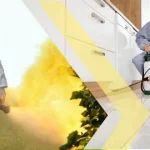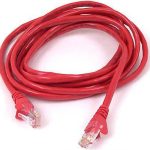Restoring a vintage car is like breathing life into a forgotten relic of the past. It’s a rewarding process that not only revives a piece of history but also transforms a rusted, neglected vehicle into a gleaming work of art. The journey from rust to riches involves a mix of passion, skill, and a deep appreciation for craftsmanship. Whether you’re a car enthusiast or simply curious about the process, join us as we explore how salvaged parts and vintage car restoration come together in a story of rebirth.
What is Vintage Car Restoration?
Vintage car restoration is the process of bringing old, damaged, or worn-out cars back to life. It involves fixing mechanical issues, restoring bodywork, replacing rusted parts, and sometimes even revamping the interior. The goal is to make the car look and function as it did when it first rolled off the production line.
For many, restoring a vintage car is more than just a project—it’s a passion. It’s about preserving a piece of history, keeping the memory of a time gone by alive, and giving future generations a chance to experience it.
The Appeal of Classic Cars
Why do we love classic cars so much? There’s something undeniably charming about their design, the craftsmanship, and the stories they carry. Classic cars remind us of a simpler time and evoke feelings of nostalgia. For some, it’s about the thrill of owning a piece of automotive history, while for others, it’s about the joy of driving a vehicle with character and soul.
Unlike modern cars, which are often designed with functionality and efficiency in mind, vintage cars are built with artistry and craftsmanship. Their sleek lines, unique features, and distinct sounds set them apart from anything on the road today.
From Rust to Riches: Understanding the Restoration Process
Restoring a cash for cars caboolture is a multi-step process that requires time, patience, and a skilled hand. The first stage typically involves a thorough inspection of the car to assess its condition. The next step is often stripping the vehicle down to its bare frame to remove rust, dents, and damaged parts. Once the frame is in solid condition, the car is rebuilt using a mix of original and salvaged parts.
The restoration process can take anywhere from several months to several years, depending on the car’s condition and the scope of the project. The result is often a car that not only looks like new but can also run as smoothly as it did when it was first manufactured.
The Role of Salvaged Parts in Restoration
Salvaged parts play a crucial role in vintage car restoration. Finding original parts for older cars can be challenging and expensive, but salvage yards, online auctions, and even car clubs can provide valuable resources for sourcing hard-to-find components. Salvaged parts not only help maintain the authenticity of the restoration but can also save a significant amount of money.
Using salvaged parts doesn’t mean compromising on quality. In fact, many vintage car restorers prefer them because they’re often made with higher-quality materials and craftsmanship than newer parts. When restored properly, salvaged parts can last for decades.
Finding the Right Parts for Your Restoration Project
When searching for salvaged parts, it’s essential to know where to look. Online marketplaces and specialized vintage car websites are excellent places to find the exact components needed. Salvage yards are also a great resource, but it requires some detective work to track down the right parts.
It’s important to verify the authenticity of the parts to ensure they match the specifications of your car. Some parts may have been modified over time, so doing thorough research and consulting with experts can save you from purchasing incorrect items.
How Salvaged Parts Can Save Time and Money
Restoring a car from the ground up is an expensive endeavor, but using salvaged parts can help reduce the costs. Instead of purchasing brand-new components, salvaged parts allow restorers to keep their budget in check. These parts can be restored and repurposed, giving them a second life while preserving the original integrity of the vehicle.
In addition to cost savings, using salvaged parts can speed up the restoration process. Finding an original part that fits perfectly can be much faster than trying to find a replacement or custom-fabricated part, which may require additional time and labor.
The Importance of Authenticity in Restoration
For many classic car enthusiasts, authenticity is key. A fully restored car should look as close to its original condition as possible. This means using original or period-correct parts and adhering to the car’s original specifications. Whether you’re planning to display the car at shows or simply want to preserve its value, authenticity is crucial.
Restorers take great care to preserve the originality of the vehicle while also ensuring it’s safe and functional. This delicate balance is what makes the process so intricate and rewarding.
Tools and Techniques Used in Vintage Car Restoration
Restoring a vintage car requires specialized tools and techniques. From welding equipment to hand tools for detailed work, restorers must have the right gear to do the job. Modern technology also plays a role, with computer systems used for diagnostics and precision manufacturing of custom parts.
Some of the essential tools include:
- Welding machines for fixing rusted panels
- Engine diagnostic equipment for tuning and fixing the engine
- Paint spray systems for applying new coats of paint
- Sandblasters for cleaning and restoring metal parts
Common Challenges in Restoring Vintage Cars
Restoring a vintage car isn’t always smooth sailing. There are a variety of challenges that restorers face, including sourcing rare parts, dealing with rust and corrosion, and sometimes even managing unexpected issues that arise once the car is in the shop.
One of the biggest hurdles is finding original parts for older models. Some cars have been out of production for decades, making it difficult to locate authentic components. In these cases, restorers may need to get creative and use modern alternatives, which can sometimes affect the car’s overall value.
Restoring the Interior: A Critical Step
While the exterior is what most people notice first, the interior of a car plays a significant role in its overall restoration. Restoring the upholstery, dashboard, and other interior features requires precision and attention to detail. Original materials, like leather or fabric, can be difficult to source, but modern equivalents are often available.
Interior restoration can also include fixing or replacing electrical components, such as lights, radios, and even vintage air conditioning systems. Restoring these elements ensures that the car is not only visually stunning but also functional and comfortable.
The Paint Job: Bringing Your Classic Car to Life
A car’s paint job is one of the most visible aspects of its restoration. Choosing the right color and finish can make all the difference in how a restored car looks. Many vintage car enthusiasts opt for the original color scheme, which can involve custom-mixing paints to match the factory specifications.
A high-quality paint job isn’t just about aesthetics—it also serves a protective function. The paint helps prevent rust and further deterioration of the car’s body, ensuring the restoration lasts for years.
Cost Considerations in Car Restoration
The cost of restoring a vintage car can vary greatly depending on the condition of the car, the availability of parts, and the level of restoration desired. A full restoration can run into the tens of thousands of dollars, while a partial restoration or repairs may be more affordable.
Before starting a restoration project, it’s essential to set a realistic budget and understand what you’re willing to spend. Some restorations require more labor-intensive work than others, which can add to the cost.
The Rise of Vintage Car Restoration Businesses
With the growing interest in vintage cars, many businesses have sprung up to cater to car enthusiasts looking for restoration services. These businesses offer a wide range of services, from minor repairs to full restorations, and often specialize in specific makes or models.
If you’re not up for the challenge of restoring a car yourself, there are many experienced professionals available to help you achieve the car of your dreams. However, working with a professional can add significant costs to the project.
How Restoration Adds Value to Classic Cars
A well-restored car removals brisbane northside can significantly increase its market value. Classic cars that are in pristine condition are often worth far more than their original selling price, especially if they are rare or have historical significance.
Restoration not only improves the car’s appearance and functionality but also makes it more desirable to collectors and enthusiasts. In some cases, the value of a restored car can be several times higher than that of a non-restored version.
Future Trends in Vintage Car Restoration
As technology advances, so does the world of vintage car restoration. We’re seeing new trends in electric conversions, 3D printing for custom parts, and even advances in eco-friendly restoration materials. These innovations allow restorers to maintain the authenticity of the car while incorporating modern conveniences and sustainability.
The future of vintage car restoration looks bright, with new techniques and tools allowing for even more detailed and intricate work. This ensures that classic cars continue to thrive for generations to come.
Conclusion
The journey from rust to riches is not just about restoring a car; it’s about breathing life into a piece of history. Whether using salvaged parts or painstakingly restoring original components, every vintage car restoration tells a unique story. The process requires passion, dedication, and a deep appreciation for craftsmanship. And when it’s all said and done, the result is a beautiful, functioning piece of automotive art that stands the test of time.








